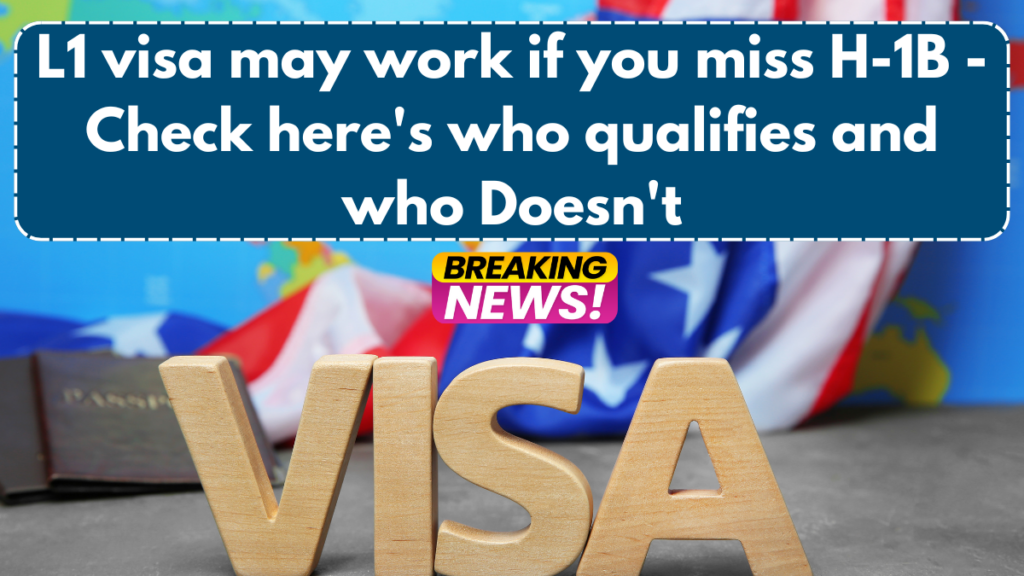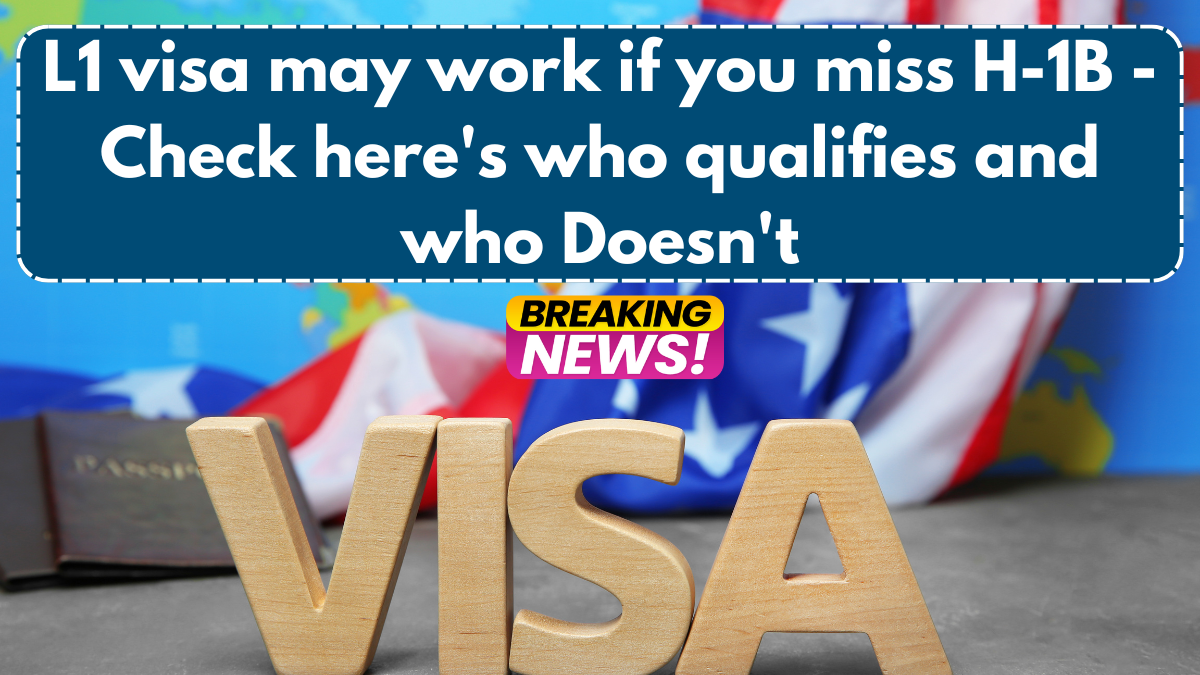As of April 2025, many skilled professionals continue to face tough odds in the H-1B visa lottery. If you weren’t selected this season, don’t lose hope. The L1 visa offers a strategic alternative for individuals working for multinational companies—provided specific conditions are met.

What is the L1 Visa?
The L1 is a non-immigrant visa designed for intra-company transfers. It enables U.S.-based employers to bring over employees from affiliated offices abroad. This can include executives, managers, or professionals with specialized knowledge.
There are two primary categories under the L1 visa:
- L1A: For managers and executives
- L1B: For professionals with specialized knowledge
The L1 visa also allows foreign companies to send key personnel to the U.S. to establish a new office, subject to strict eligibility criteria.
Key Eligibility Criteria for the L1 Visa
To qualify for the L1 visa, applicants and their employers must meet the following requirements:
| Requirement | Details |
|---|---|
| Corporate Relationship | The U.S. and foreign offices must be part of the same organization—parent, subsidiary, affiliate, or branch. |
| Employment Role | Applicant must be an executive/manager (L1A) or possess specialized knowledge (L1B). |
| Work History | The employee must have worked at the foreign entity for at least one continuous year in the last three years. |
Failing to meet any of these criteria will likely result in visa denial. According to immigration attorney Abhisha Parikh, “This visa is only suitable for specific intra-company transfers. Make sure every condition applies to your situation before initiating the process.”
USCIS Requirements for Employers
The U.S. Citizenship and Immigration Services (USCIS) also outlines specific expectations for employers:
- The U.S. company must maintain a qualifying relationship with the foreign business.
- The company must be actively conducting business both in the U.S. and at least one other country throughout the employee’s stay.
USCIS emphasizes that “doing business” means providing goods or services regularly—it’s not enough to simply exist or maintain a presence.
L-2 Spouse Work Rights in 2025
Spouses of L1 visa holders, who fall under L-2S status, enjoy the benefit of automatic work authorization in the U.S. Unlike in the past, they no longer need to file for separate work permits. Still, they can choose to apply for an Employment Authorization Document (EAD) for convenience or employer verification purposes.
Accepted documents for proof of work eligibility include:
- A valid Form I-94 indicating L-2S status
- Form I-94 marked L-2 with accompanying USCIS notification
- An unexpired or properly extended EAD (Form I-766)
L1 Visa Costs in 2025
| Item | Fee |
| Form I-129 (petition) | $460 |
| Anti-fraud fee | $500 |
| Premium processing (optional) | $2,805 |
| DS-160 visa application fee | $190 |
Other U.S. Visa Options If L1 Doesn’t Fit
If neither the H-1B nor L1 is viable, several alternative pathways exist. Varun Singh, Managing Director of XIPHIAS Immigration, points out the following options for Indian and other international applicants:
O-1 Visa: Extraordinary Ability
For individuals with nationally or internationally recognized achievements in science, arts, education, business, or sports.
- Form I-129 fee: $1,055 ($530 for small entities)
- DS-160 fee: $190
E-2 Investor Visa
For nationals of treaty countries who are investing significantly in a U.S. business. While Indian passport holders don’t qualify directly, dual citizens from treaty countries may apply.
- Form I-129: $460
- DS-160: $205
H-3 Trainee Visa
Designed for foreign nationals undergoing training in the U.S. that is unavailable in their home country. Does not permit regular employment.
- Form I-129: $460
- DS-160: $190
F-1 Visa + OPT and STEM OPT Extension
Applicable to students in SEVP-certified institutions. After graduation, they get up to 12 months of Optional Practical Training (OPT), with a 24-month extension for STEM fields.
- SEVIS fee: $350
- DS-160 fee: $185
Cap-Exempt H-1B
Jobs at universities, affiliated nonprofits, and research institutions are not subject to the annual H-1B lottery. These roles are available year-round.
Employment-Based Green Cards (EB-2, EB-3)
Long-term solutions for professionals and skilled workers.
- Form I-140: $715
- DS-260 (immigrant visa application): $345
- I-864 (affidavit of support): $120
J-1 Exchange Visitor Visa
Best for researchers, interns, and trainees participating in government or educational exchange programs.
- SEVIS fee: $220
- DS-160 fee: $185
Conclusion
The L1 visa remains one of the most strategic and flexible non-immigrant pathways into the United States in 2025—especially for professionals tied to multinational companies. While eligibility is narrow, those who qualify benefit from a fast-track process, family-friendly provisions, and the possibility of transitioning to a green card. For everyone else, knowing your options—from O-1 to cap-exempt H-1B—can open new doors.
FAQ
What is the main difference between L1A and L1B?
L1A is for executives and managers, while L1B targets professionals with specialized knowledge.
Can I apply for a green card while on L1?
Yes. L1 visa holders can apply for permanent residency, and L1A holders often qualify for EB-1C—a faster green card category.
Is premium processing worth it?
If you’re on a tight timeline, premium processing (15-day decision) can save time, especially when relocating quickly is crucial.
Can I switch employers on L1?
No. The L1 visa is employer-specific. Changing employers would require switching to a different visa category.
Does the L1 visa have an annual cap like the H-1B?
No. The L1 visa is not subject to a lottery or cap, which makes it more accessible if you meet eligibility.
For More Information Click Here
Pari is a passionate writer known for captivating stories that blend imagination and reality. Inspired by travel, history, and everyday moments, Pari crafts narratives that resonate deeply with readers.




